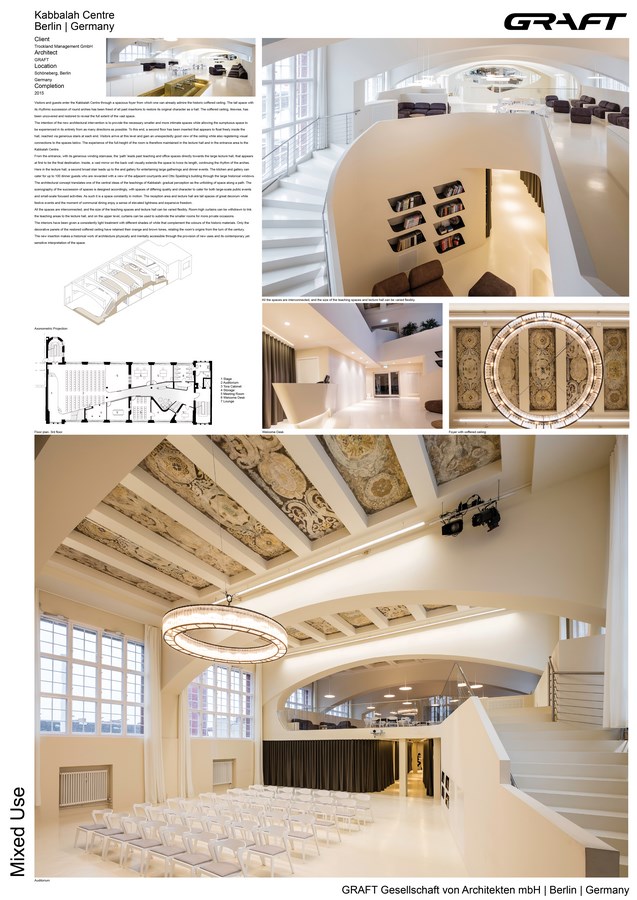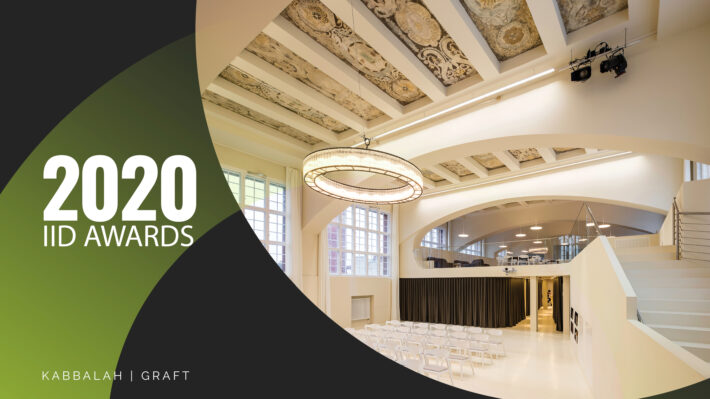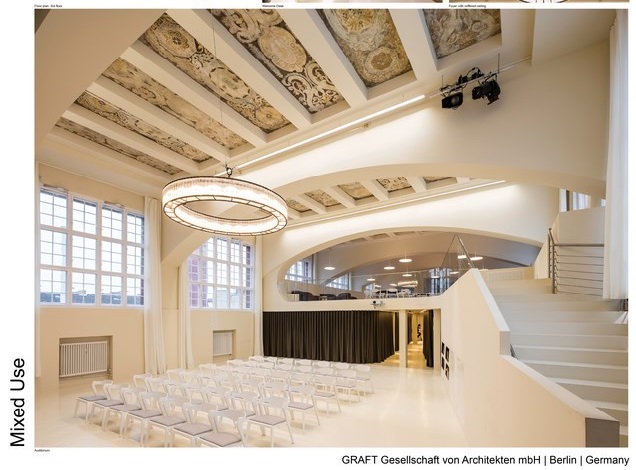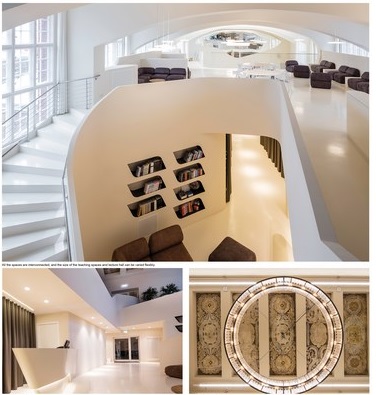A unique residential and commercial quarter BRICKS BERLIN SCHÖNEBERG with a mixture of historical architecture and contemporary reconstruction will be developed on the grounds of the former Postfuhramt (post office) Berlin Schöneberg close to Acacia Kiez, between Hauptstrasse
and Belziger Strasse.
Winner – International Interior Design Awards 2020
Firm | GRAFT
Designer | Lars Krückeberg, Thomas Willemeit, Wolfram Putz
Project Category | Mixed-Use Interior Built
Project Team | Founding Partners: Lars Krückeberg, Wolfram Putz, Thomas Willemeit Project Lead: Dennis Hawner, Altan Arslanoglu Project Team: Sebastian Gernhardt, Emma Rytoft, Sven Bauer
Client: Trockland Management GmbH
Country | Germany
Photographer/Copyright | ©GRAFT

The ensemble consists of three different courtyards and offers a public passage that blends perfectly into the vibrant heart of Schöneberg. Between the first and second courtyard on the grounds of the listed Postfuhramt, built by the architects Otto Spalding and Luis Ratzeburg at the beginning of the 20th century, lies a richly decorated cross building, a brick architecture of younger age, with a spectacular hall. Situated on the third floor, the 7.5 m high hall was originally used as a telegraph switching centre. It is here where the new Kabbalah Centre of Berlin will find its future home.
Visitors and guests will enter the Kabbalah Centre through a spacious foyer which offers a view to the historic coffered ceiling. The high room with its round arches has been freed from all the interim built fixtures, giving it back its generous hall effect. The coffered ceiling has been extensively excavated in order to experience the vast space in its full extent. Even though the centre is provided with the needed small rooms and intimate spaces, the idea of the architectural intervention is to gain a great impression of the entire space and experience it from different angles. For this purpose a second level, which seems to float freely inside the hall, will
partially be integrated and be accessible via spacious stairs on both ends.
This mezzanine offers visitors an unexpected close look to the coffered ceilings and also allows many different visual connections to its lower main level. The total ceiling height in the lecture hall and also in the entrance area of the Kabbalah centre will be preserved. From the entrance, with its generous staircase winding upwards, the path leads past teaching rooms and office spaces directly in the large lecture hall, which seems to be the goal of the “path”. An oversized mirror on the back wall visually expands the space to twice its length and continues the rhythm of the arches. Here in the lecture hall, a second wide staircase leads to the upper level, where the gallery with a kitchen for large parties and dinner events is located. It offers space for 100 dinner guests. The large historical windows allow a clear view into the two adjacent courtyards and the architecture by Otto Spalding.
The architectural concept translates one of the central ideas of the teachings of Kabbalah: gradual perception as spatial development along a path. According to this the scenography of the spatial sequence of different utilizations and qualities for intimate and official needs arises – it is a constant space of interaction. Reception and presentation get the largest room height, while festive events and eminent moments of joint dinners float lightly above with unobstructed views into the distance.
All the rooms are interconnected. The sizes of teaching rooms and lecture hall are partially flexible. Teaching rooms can be attached to the lecture hall by opening room-high curtains. The same applies to the upper-level. Here temporary private spaces can be divided by curtains for smaller events. The entire hall will get a consistently bright appearance, whose shades of white are based on the colour spectrum of the historical materials. Only the cleaned coffer decorations contrast in their orange and brown tones and show to be originally from the turn of the century. In this way, another gem of historic architecture will be made mentally and physically accessible and tangible through a new use and spatial interpretation.





